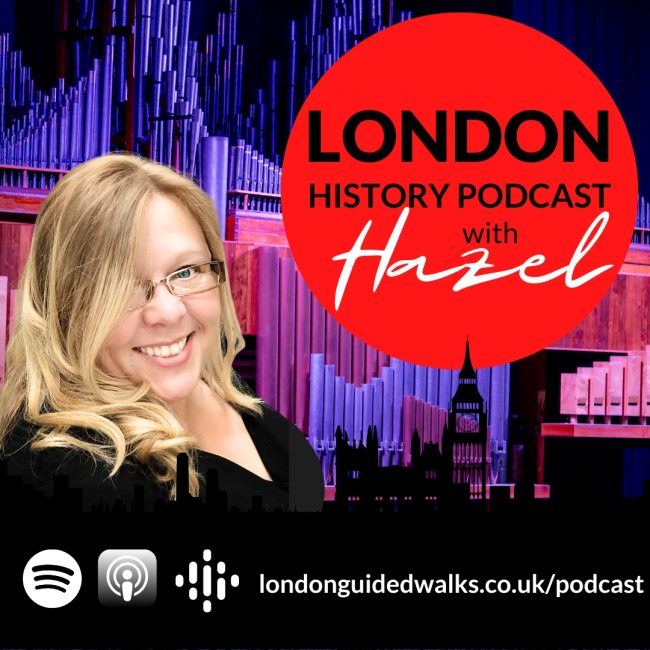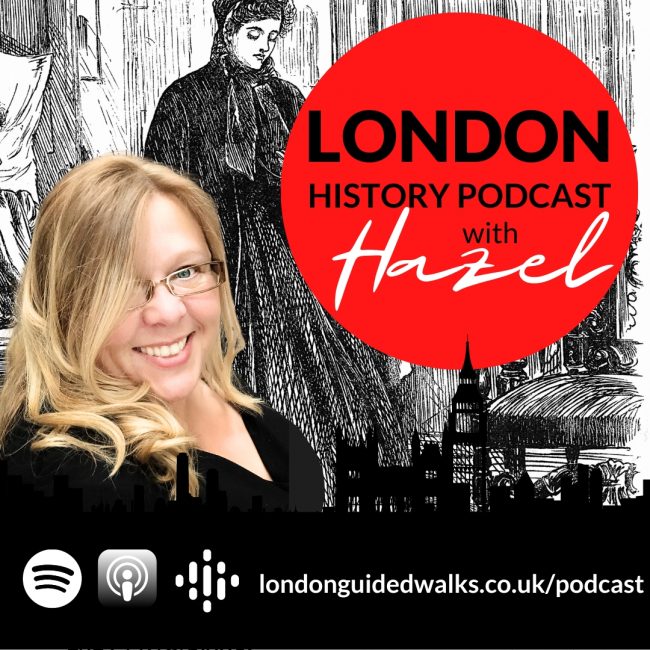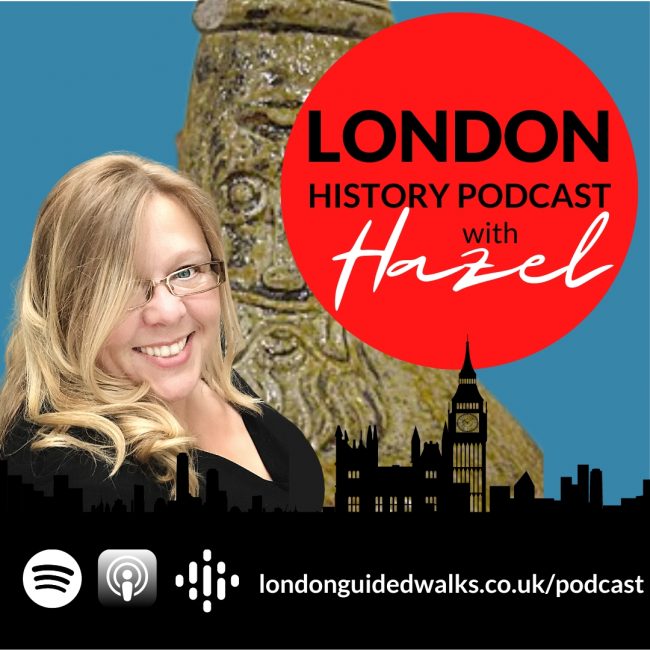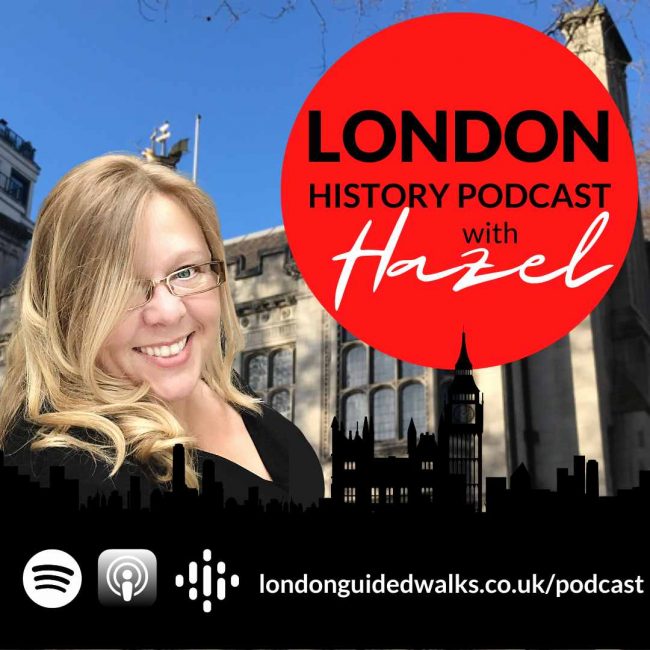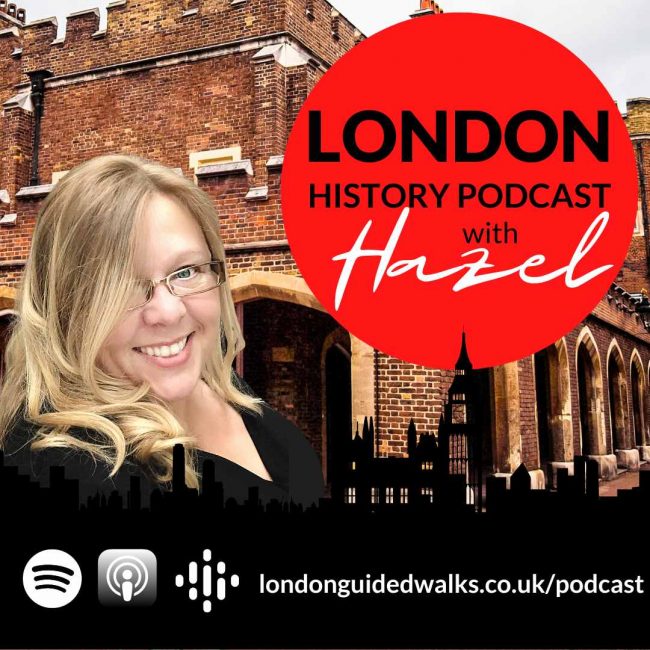Podcast Episode 116. Caroline Crachami Transcript
[00:00:00] Hazel Baker: Today, we’re going back to the late Georgian period, during the reign of George IV. We’re going to share with you the story of Caroline Crachami, popularly known as the Sicilian Fairy. It’s an enthralling but melancholy tale where we can look into the complexities of early 19th century British society. A society enamoured with the oddities of human anatomy, yet often blind to the implications for human dignity.
To discuss this further is Charlotte Hopkins, who, after a seven-year project, has self-published a book entitled The Ballad of Caroline Crachami, The Sicilian Fairy. Hello, Charlotte. Hi. I have your beautifully illustrated book here, and I suppose what I really want to get to with this episode is to discuss Caroline herself, but also the world in which she lived and how we have, and our perceptions have changed since then.
And also maybe ask some of the difficult questions as well. So first of all. Who was Caroline Crachami?
[00:02:07] Charlotte Hopkins: This is one thing also about the pronunciation of her name that I’m not 100 per cent sure of. I’ve always called her Crachami. But it could be Crachami, but I think it’s Crachami.
Anyway, in terms of who Caroline was she was born, we think, in 1815, the year after the Battle of the day after the Battle of Waterloo. But That cannot be proven 100% because there are no records of her birth. I’m inclined to think she may have been born in Dublin. Now this might be a bit controversial, but because there are no records that survive in Dublin, that would make sense, whereas in Sicily and Italy, the records are quite good.
So if we can’t find her birth there, it just makes me think she was born in Dublin. And the reason I say that is because her father left. Sicily Palermo in Sicily in 1815 to go to Dublin to the Theatre Royal. He was a performer. He was in a military band. But he also, yeah, he performed there at the Theatre Royal in Dublin.
So yeah, so that’s, that was her kind of family background. But she had this very rare condition primordial dwarfism that’s, it’s extremely rare, it’s a congenital condition, and it affects one in restricted restricted growth. So it basically starts in the room and then that’s what happens.
But there are all these myths at the time, obviously being a completely different era, that her mother was frightened by a monkey and that’s what caused it. So obviously that’s very shocking and that’s just awful, but, yes, so regardless of where she was born, the connection is definitely in Sicily with her father from there.
Now he has a very sort of almost Germanic name Vogel was another form of it. But he was definitely, he was born there. And the Crachami is just the performing name really for Caroline.
[00:04:17] Hazel Baker: You mention her having this performing name. So what is it that she actually did?
[00:04:24] Charlotte Hopkins: Apart from being very small so she was about 50 centimetres.
So that’s quite important. So the average sort of nine-year-old today, cause that’s the age that we think she may have been when she sadly died would be, I think around 133 centimeters tall. So it’s very. small in comparison. And she, so she was at this time in, the 1820s subject of curiosity, really.
People enjoyed looking at her as a form of fascination into why she was so small. And she was living in Dublin as a young child and because her health wasn’t generally very good. At this point her parents took her to this Dr. Gilligan, and he, unfortunately, did then go on to exploit her.
So he did take her to England with the promise of better. Care and a better climate, actually, is what he says. Not much difference between here and Ireland, I’m sure. But yeah, so this was his promise. But he did say he might exhibit her for a period of time to help pay for the fees of taking her to England.
And I think there was some discussion with that with the parents. But Yeah, largely, I think it was a lot more exploitative than that, and they certainly never saw any of that money that was made from exhibiting her, so she was a, as a curiosity at that time much like we might think of John Merrick, so the elephant man was later, but this, she was very early sort of Georgian figure.
[00:06:09] Hazel Baker: And when is it that she’s given this nickname, this performer’s name of the Sicilian fairy?
[00:06:16] Charlotte Hopkins: Yeah, so I, this is given to her, I think, With, by Dr. Gilligan I hit her, him, and also Thomas Crackham, which was another showman. I think, I can’t quite remember now, but I read so many newspaper reports, but I think that was in Manchester.
And he gave her this name Caroline Crachami, so she had all these different names. So I go on to say that in the poem that she, didn’t really know who she was, if she was coming or going, with all these different identities. And so yes, this was given to her, I think, by Probably conjured up by the showman exactly who said, that was going to be her name is not clear But essentially because of her family background and that she you know They wanted to give her this kind of wonderful better phrase exotic Pugin’s exotic.
A civilian and a fairy.
Fairy, exactly. Because she was so small and doll in her proportions. That was I think where they were coming from with the fairy bit and the magical sense that she’s otherworldly. I think that’s what, yeah, what they were thinking.
[00:07:20] Hazel Baker: How did you come across Caroline in the first place?
How did you get to learn about her? And also, what was it that inspired you to write her story?
[00:07:31] Charlotte Hopkins: So I, so it was a lot longer than seven years ago, actually. That’s just when I got down to the writing of it. But way back in 2008, I was doing a Victorian Studies MA at Birkbeck, and We looked at the long 19th century, it’s obviously Carolines before the Victorian period which was 1837, but we did take the whole account of this very long century and So I just came across her when I was also looking at Tom Thumb, Charles Stratton, who was another famous dwarf and she, I just read her story online, I think, and then I just decided I needed to go and see her, so I’m taking part again in her being exhibited, in a way, but she was, at this time, back in 2008, on display in the Hunterian Museum, which is part of the Royal College of Surgeons.
[00:08:29] Hazel Baker: Yeah, for our listeners, that’s in Lincoln’s Inn Field, and they have reopened after redoing the museum. It’s well worth a visit. And Stephen’s written a blog post about that, so I’ll include that in the show notes. Yeah, remember seeing the skeleton of Caroline on display right next to the Irish giant, Charles Byrne.
[00:08:51] Charlotte Hopkins: Yeah that which is interesting in itself because it’s myth mythological taxonomy that they created around that idea of fairies and giants yeah, so I went, I decided I’m going to go, I’ve read about her, I’m going to go and see her, see how small she really is, and yeah, she’s very interesting.
Very tiny. It’s just her skeleton, obviously, and then her I think there was a ring and a cast maybe of her foot and a stocking or something like that. All these very tiny things just really, that really caught me and I just felt… Very emotional at that point and I think I just, I did just stare at her for what felt like hours, I mean I can’t have been there too long but I was just looking and reading about her and then I just was imagining her as a person being shown around the streets and the exploitation of that.
And that really, that was very upsetting and still upsetting now. To think of a very young girl being treated in that way. That was the inspiration, I decided I’m going to write an article about her so I can do a bit more research and find out some things. And that got published online through the Guildhall Library when I was working there at the time.
And actually that was good that I did put that online because later her descendant Cal King, that’s how he found out about me and we got in touch. So that was a nice a nice connection. Yeah. So I did that and then I didn’t really write much about her for my, in my ma I did a little mention of her, I think as part of a, part of this essay I did on Tom Farm Lodgey.
And then it just kept coming back to me after that. I just thought I needed to do something creative with it to give her that voice that she didn’t have herself, and. Not many people have done that. I think there was there was a book called The Smallest Person written by Timothy Nettman Probably about, I want to say about 20 years ago, and that was developed into a play on the Fringe in Edinburgh performed by the Trestle Theatre Company, so they did use her as a puppet but trying to make a correlation with a current day situation with a small boy and what he was going through.
So I thought that’s, there’s been that. And there’s also been some artwork, I think, and a very excellent book by Gabby Wood called The Smallest of All Persons Mentioned in the Records of Littleness. So that, that was really good for getting background as well. But apart from that, there wasn’t really a lot else.
And I thought I need to do something that’s, yeah, that’s creative. And so I did the poem, a long poem on her. Yeah.
[00:11:47] Hazel Baker: The title of your book, The Ballad of Caroline Kukami, evokes a musical or poetic narrative. Could you perhaps elaborate on your choice of the word ballad?
[00:11:59] Charlotte Hopkins: It’s not a rock ballad or anything like that, which wouldn’t be quite appropriate or fitting for this story.
Yeah, it’s a bit more sensitive than that, but it’s… It comes really from the idea of the traditional telling of ballads that people used to do on the street, telling about their daily life or their work, they’d sing what they were doing, and these tales were passed down through the centuries, so I wanted that sort of idea of passing down an oral tale, if you like and often it was, it was like It was a song, it was a bit more lyrical and people would dance to it.
So I wanted to evoke that feeling when writing the poem. And they would have the twin themes of love and death. And I think this is what we’ve got here. I feel like a connection to her. And so that’s a laugh and wanted to show that, she is loved even though she hasn’t been talked about very much over the years and been forgotten.
But there’s a line in there actually the ballad child of child from the land of the Banshees. So that’s also a reference to the Irish folklore and the wailing of the voice of female spirits that predicts. death. So that’s, yeah, a bit more gothic and dark.
[00:13:14] Hazel Baker: Also used in Jekyll and Hyde.
[00:13:15] Charlotte Hopkins: Yes. Yeah,
[00:13:17] Hazel Baker: the child’ screaming like a banshee. Yeah exactly. Yeah, so I, I wanted this idea of something that would dance along. I don’t know if that’s the right Word, but it just that was it gave it some kind of immediacy as well. Rather than just reading a story That would take a little while to unfold.
I wanted it to bam, right there, you’re in with it, and you can tell it in a quite succinct way, which was really my main aim, to get the point across and have the emotion that comes through hopefully with that.
In dealing with writing about a real person like Caroline, how did you strike a balance between staying true to the historical accounts and also employing artistic license?
[00:14:06] Charlotte Hopkins: Yeah, so it’s always difficult because there are inevitably some gaps and some things that are lost to history that you can’t find out lots more details. Yeah, so trying to get that. balance between, I didn’t want to, I wanted to be as accurate as possible as well. I didn’t want to put stuff in there that wasn’t true at all.
So I’ve done my best with that. I hope just largely based on newspaper reports. Let’s say that’s not always true. Is it newspaper reports? But from what was available to me from that period at the time. So yeah, in terms of getting that.
No, I was, yeah, I just, I didn’t really, I didn’t Inflate what happened to her but I had to add in, I’m just looking through it now actually, just to see if there’s anything I can pick out. So for example, at the end, which I maybe shouldn’t jump to the end yet, spoil it for the readers. For the listeners, but.
It’s her father, upon combing the streets, a distraught father found the daughter’s body was sold for the sum of ten pounds. So that’s true. But I just had to imagine, obviously, what he would be doing, like how would he feel at that time, knowing that his daughter is now, he has, died at this point is now being dissected
by the Royal College of Surgeons. To, yes, imagine them moving through the streets and imagine what the feelings would have been. And as much as I’ve tried to give her a voice, I suppose we don’t really hear from her as such either because it’s still, she’s still objectified, not by me hopefully, but just the feeling at the time is that she is being objectified as this object and that people are looking at and coming to pay money for to see two shillings and six or whatever it was.
So yeah, so it’s very difficult to get there to get that balance really. Cause I do like to stay. as close to the truth as possible. The only thing that, that isn’t quite true is I, there is a line about her devastated parents coming together to, find, to find their daughter when they’d heard that she died.
But the mother didn’t come, I don’t think at the time. I just thought I wanted to imagine the mother would, why wouldn’t she come, maybe because she was looking after all the other kids. Exactly. Yeah, so that’s as much of it as possible is definitely, true. It’s just just making up those bits in between to imagine yourself on those streets with that person.
[00:16:45] Hazel Baker: Yeah. I suppose having an Italian or an Irish accent in London, not necessarily going to be the most of welcomed. Accent at that time. Yeah. And at that time, yes, of course. And also then trying to access your daughter via people who are educated and have are able to afford a distance from you, how are you actually going to penetrate those layers?
How are you going to get your daughter back? And also assuming Roman Catholic and knowing that your daughter has been. Dissected and her body is completely, how is she ever going to get to heaven and purgatory if her body’s been violated, which was something, the dissection was for murderers.
Yeah. And she’s an innocent nine year old girl. When I was reading around the subject for our chat today, I found a little snippet in the newspaper, which from 1824, and it said Miss Kachami, the celebrated Sicilian dwarf exhibiting at 22 New Bond Street. This is the posh part of town. These are the posh people going to look at her, you’re going to have a whole upper level of society that’s only really allowed those streets, unless you’ve got a particular business of being there.
And continuously it says, this wonderful young lady has lately arrived in this country and has had the distinguished honour of being presented to his majesty at Carlton Palace. So that’s George IV, who’s been braided round there for him to gawp at her. She is universally allowed to be the smallest person ever heard or read of, being nine years and eight months old, 19 inches high and only weighing five pounds.
Attendance from 11 until five, admittance two shillings and sixpence. Yeah.
[00:18:45] Charlotte Hopkins: Oh my goodness. Just yeah, and now on the site there, so you can picture what part of town it’s in, it’s a Burberry, it’s a Burberry building. I wonder if they know. Yeah, I don’t think they do. Yeah, so that was there. And that was one thing actually, when we’re talking about accuracy in the first edition of this book, I’ve now got a second edition.
But in the first edition, I put 23, New Bond Street. And I think I’ve read somewhere that and then I found later, it was definitely 22. So I know these little tiny things, but I did go back and correct it because I don’t like to be wrong.
[00:19:19] Hazel Baker: No, of course. It’s it’s one of those things that you can only use the information that you were, you’re given and that I suppose links us to that resources that you do have.
So you mentioned newspaper clippings and I’ve just read one out that I found via the Welcome Trust. What else did you
[00:19:34] Charlotte Hopkins: use? So I did use, there was also an extract from the sort of medical book in the Royal College of Surgeons, which shows when she was brought to brought there in a box, is what it says, brought in a box by Sir Everidge Holme.
So that was. Yeah, it’s quite chilling. So that was a little extract there and then some research that Cal had done, because he’d spent quite a lot of time with Royal College of Surgeons records, talked to me about that, but I didn’t want to look at anything to do with the dissection and anatomy side of things, because I just felt that would draw me into a kind of scientific side.
So I it takes away that human story. Exactly. So I deliberately didn’t go too far into that. But I did use, say, the newspapers, and then I just did a lot of research in secondary sources or academic pieces that have been written at the British Library and some sort of general ephemera that I’d come up with, Dr.
Gilligan’s memoirs. And there was an annual register from 1824 that mentioned her as well. So it was quite difficult, yeah, to get the, to get in there with all the primary sources. But you just have to keep checking and checking everywhere, see what’s out there. So they would, that was the main sources and then just background to the era as well through.
visual sources, which is more my thing as well. So through the London Picture Archive, which is through London Metropolitan Archives, there’s over 250, 000 images on that site. So that was very rich site, just be walking through Georgian London imagining you’re there.
Obviously that’s artistic interpretation. It’s not like having a photograph. They’re photographs can be doctored too, can’t they?But yeah, so that just gave a real feel for it. But it was difficult. It was difficult to get primary sources. And I said the best one, not primary source, but the best source of research was Gabby Wood’s book.
She wrote that in 1998. former Guardian writer was excellent really. So that just, that, that helped a lot to get the overall picture.
[00:21:49] Hazel Baker: And do we know at all what Caroline was wearing? What, dare I say what costume she had? She was a fairy.
[00:21:57] Charlotte Hopkins: We don’t know. I didn’t find any evidence to say what.
There is a painting that was done later by Alfred Edward Chalon. And, but she looks more Elizabethan then with a big ruff around her neck. And she’s facing and also seated in in profile. So I don’t, yeah, I don’t think we really know. We don’t know what she was actually wearing or what she was actually, what she would look like, which is, was part of the inspiration for doing silhouettes in the book as well.
So a mixture of silhouettes and the original sort of historical prints. Which is quite
[00:22:39] Hazel Baker: ironic, really, in the way that we don’t know what she looked like, even though she was. are used and misused because of her looks.
[00:22:48] Charlotte Hopkins: Exactly. So the most the main image of her I have, unfortunately, is her skeleton.
That’s the one that stays with me because that’s the image you see all the time, but we don’t know what she actually looked like. But yeah, that was the reason we have the silhouette images of her in the book, which I felt were obviously quite timeless in a way, but they speak of a certain… era as well and makes her quite ghostly in a sense.
Yeah. Yeah. And a bit gothic. So that was the draw for the, for Bronya’s Bronya Sawyer’s silhouettes.
[00:23:19] Hazel Baker: I’m talking of illustrations, but it’s worth saying it’s not a children’s book. No. We’ve discussed a number of themes, but what was it that you wanted to explore through this narrative? Are there any contemporary issues that you feel resonate with Caroline Kukami’s
[00:23:35] Charlotte Hopkins: story?
Yeah. So I think generally giving any sort of child a voice that was a strong theme for me. Just. To give her that. But also as a child that experienced a disability I felt that was important to, to show and to represent her in such a way that was kind. I suppose that’s the right term, but it was just not as this, As we said, object or curiosity, which is unfortunately what a lot of people who had disabilities were employed in, in that way in the show, in the fair in what we, for want of a better phrase as the phrase at the time, the freak show, which would obviously not say now but the freak of nature.
This is what they, that’s where it came from. So yeah, so I was, that was one of the key things I wanted to look at was to give that voice to disabilities across the centuries. Yeah, so that, that was
[00:24:40] Hazel Baker: that. And were there any particular… elements of Caroline’s life you found emotionally and or challenging to write?
[00:24:47] Charlotte Hopkins: Yeah, I think, yeah, just as a whole, the whole story, but the end, especially because up to that point, she’s okay, it’s awful that she’s being put on show, but she’s still alive and she’s still, in the presence of people. But I think just thinking about her not being with her parents at that point, because they wouldn’t have come with her when she was being shown around from Manchester to Birmingham and Oxford, all these places that she went around England, not just London.
So that was challenging to think of. a child being dragged around these areas and obviously probably not very nice conditions as we said at the, again, that was in Bond Street, but apart from that bit, she might have been shown in the back of a sort of caravan style. Cart or something and who knows?
There is actually a bit in Gabby Wood’s book that says that there was a sign announced that she could be handled by anyone who was willing to pay an extra shilling. So that, it means probably she was abused as well on, on the road. And it’s, God only knows what what actually happened, but.
that they would attract, she would attract large crowds and just, it just, yeah, that’s quite the seedy side to it, just imagining these gentlemen, I should, I say gentlemen, but it could be anyone, but imagining Georgian gentlemen going in there and just, everyone’s with the money. Yeah, exactly. So that was challenging.
And also, because she had prepared for the King Julius IV, as we said, at Carlton Palace. And she was put on, I did read somewhere that she was put onto his bed that’s why there’s a picture, a drawing in the back of imagining her being put onto the bed like a, I don’t know, like a little princess.
But that, I just thought, I’ve got to put that in there, just to show that royalty were involved as well. Yeah, they rock. Yeah, they were absolutely fascinated by The figure of the dwarf, actually, the royal family for through the centuries, have had that as, entertainment, yeah. Which is challenging to think about. Yes. And
[00:27:05] Hazel Baker: for listeners, we also have episode 80, so that’s eight zero. And that is Disabilities in Tudor times, it might be worth you having a listen to that one as well. I’ll put a link in the show notes as well. Simply go to londonguidedwalks. co. uk forward slash podcast and click on episode 116 Caroline Krukami the Sicilian Fairy.
So Charlotte, was there anything surprising in your research or writing process that you found or was it all pretty much
[00:27:33] Charlotte Hopkins: straightforward? I think because there is so little in terms of what survives in terms of primary sources it was, yeah, I just had to go with the newspaper idea of what happened largely.
So that’s why I wish, if I could turn back, if I could take a time machine, I would like to go back and just see what did actually happen to this poor girl.
[00:27:59] Hazel Baker: So we’ve already mentioned that she dies at the age of nine. It’s worth, sharing, I think, with the listeners of what she died from
[00:28:07] Charlotte Hopkins: tuberculosis.
I think that was what actually carried her off in the end, unfortunately, but it’s no surprise because she must’ve been completely exhausted. And I think that’s part of the reason that she came. to England from Dublin. And, but, not just as a, we’re going to see why she’s so small, but the main thing was that she was already not very well, I think, so for the months and months after that, and then she just deteriorated.
Yeah, and ended up in a box. Oh dear.
[00:28:42] Hazel Baker: You’ve undoubtedly spent a lot of time with Caroline and her story how has that journey impacted you on a personal
[00:28:49] Charlotte Hopkins: level? Yes, it’s really hard to let go. She’s she’s spoke to me so much over the years. Not literally, obviously I’m not imagining her in my dreams, but I did feel, yeah, that there was this.
Person I’d found and I wanted to give her this voice and now I’ve got to got to put it away You know and she’s not on display thankfully anymore at the Royal College of Surgeons She’s still there in the archive, but yeah there’s not any mention of her either there now on display.
I did contact them about my book and to ask questions before they reopened after the refurbishment, saying, is she going on display? And they were a bit candid about it at first. They didn’t want to say, and then eventually said, no, she actually, she’s not going to go back on display. So I was quite pleased about that.
Which is awesome.
[00:29:39] Hazel Baker: Really? Putting her in an archive, so her story is lost. We don’t talk about the difficult things, and we don’t it’s like an out of sight, out of mind kind of principle, really. What’s wrong with taking a 3D scan of her skeleton and burying her with her family, letting her go home?
We’ve got the technology available now. Why not do that?
[00:30:05] Charlotte Hopkins: Definitely. Yeah. That’s the thing, isn’t it? That’s, let’s say that’s the whole theme through this is that’s why I wanted to give her that voice, but the fact that if they’re not even going to use some aspect of her life for interpretation, so it’s a very general public of what happened, then yes, a 3D scan and having Immersive exhibit or something, because I’ve got quite a few immersive exhibits now.
That you could do that and then send her home. Yeah, I have a family member Cal, said that he, that was a wish of the family. But he’s such a lovely guy. He’s not he’s not like pushing that
[00:30:41] Hazel Baker: no. It is a long time ago now. We’re talking nearly 200 years, next year.
However some things I think need to be, I don’t know, when you’re talking about difficult subjects, there’s no point in just putting a rug over it and expecting it to to disappear either. And you can write certain wrongs even now.
[00:31:02] Charlotte Hopkins: Definitely, absolutely, which is what they want to do with the Irish giant, Charles Byrne.
That’s still a controversial subject, isn’t it? Yes.
[00:31:13] Hazel Baker: Yes, indeed. And we talk about this in episode 72 with Ian McDiarmidEpisode 72 iDoctors William and John Hunter. We talk about Charles Byrne and of course it’s all interlinked. I also talk about this on the Jekyll and Hyde tour. Humans are ultimately interested in humans.
And the odder, or use the term freakish, they were the less chance they had of a normal life, of actually having a job. Would anybody employ them? Could they physically do that job? And so entering a freak show was at least one of the ways for… Some of being able to send money home not in a little Caroline’s case, unfortunately.
So Charlotte, thank you very much for sharing Caroline’s story there. Thank you.
[00:32:03] Charlotte Hopkins: Thank
[00:32:03] Hazel Baker: you. So for anybody who’s wanting to know the more fuller detail of Caroline’s life, then I have written a blog post, which I will link into the show notes along with links to. this beautifully illustrated book written by Charlotte, along with any other relevant sources and podcast episodes for you to continue your learning.
That’s all for now. Until next time.
These shoes @HunterianLondon belonged to the ‘Sicilian Fairy’ Caroline Crachami, who was 19.8″ tall #WalkAMile https://t.co/GCO9RYmvW0 pic.twitter.com/OojuP6FOsO
— MuseumMileLDN (@MuseumMileLDN) October 7, 2016



 Guest: Charlotte Hopkins
Guest: Charlotte Hopkins Miss Crachami, the Sicilian dwarf exhibiting at 22 New Bond-street.
Miss Crachami, the Sicilian dwarf exhibiting at 22 New Bond-street.